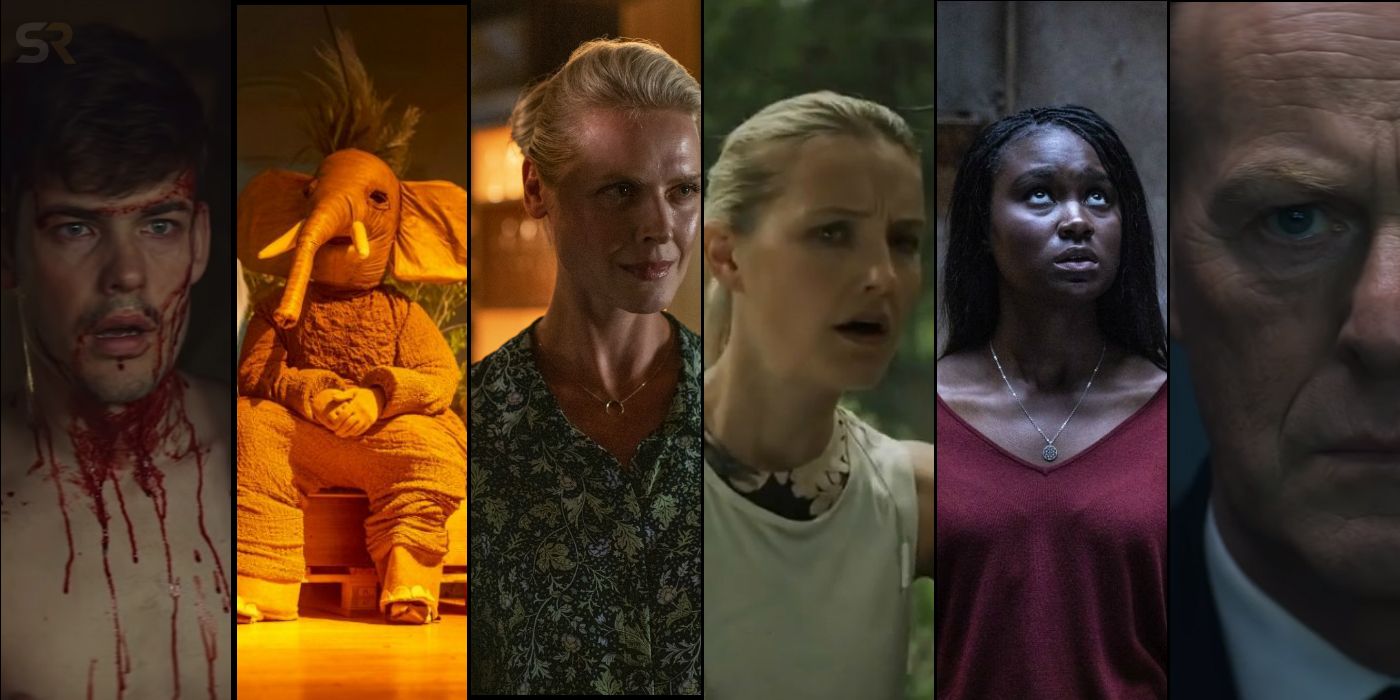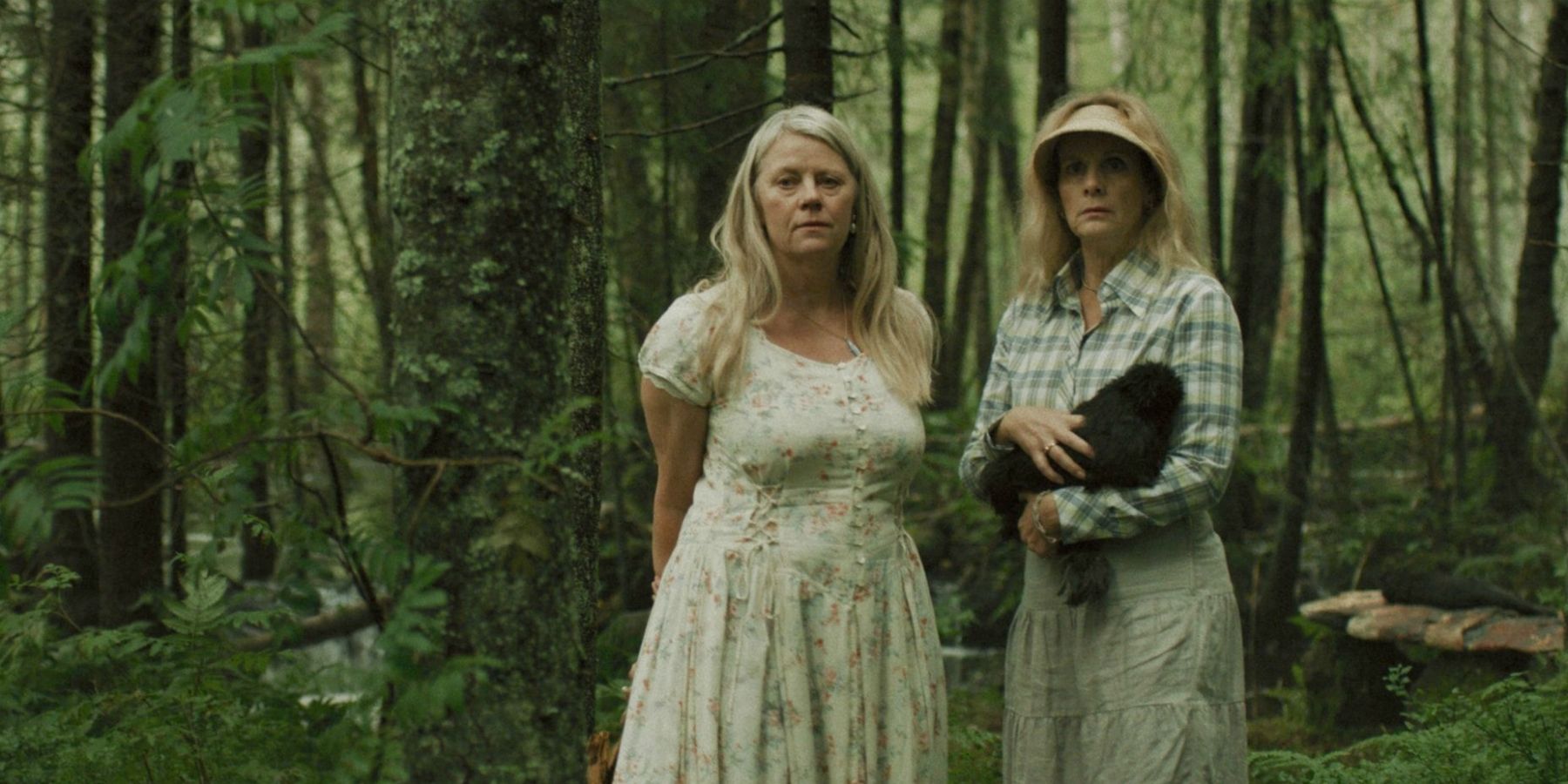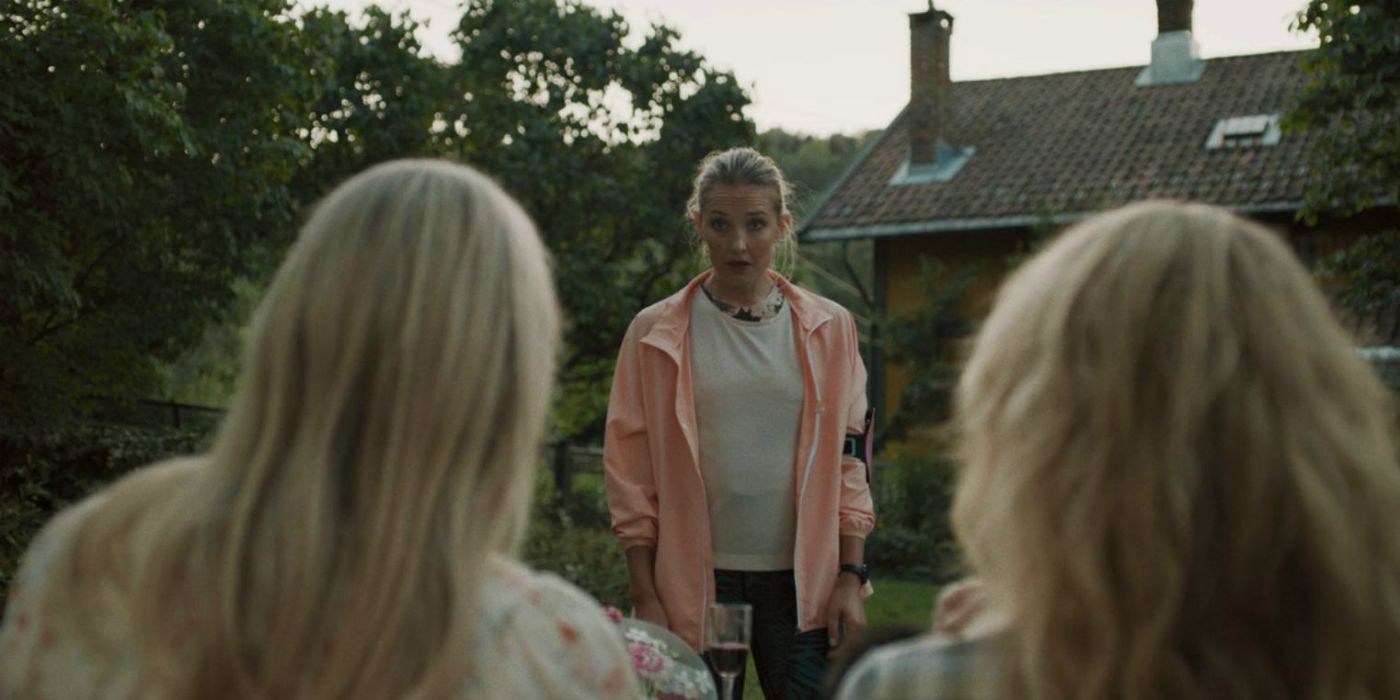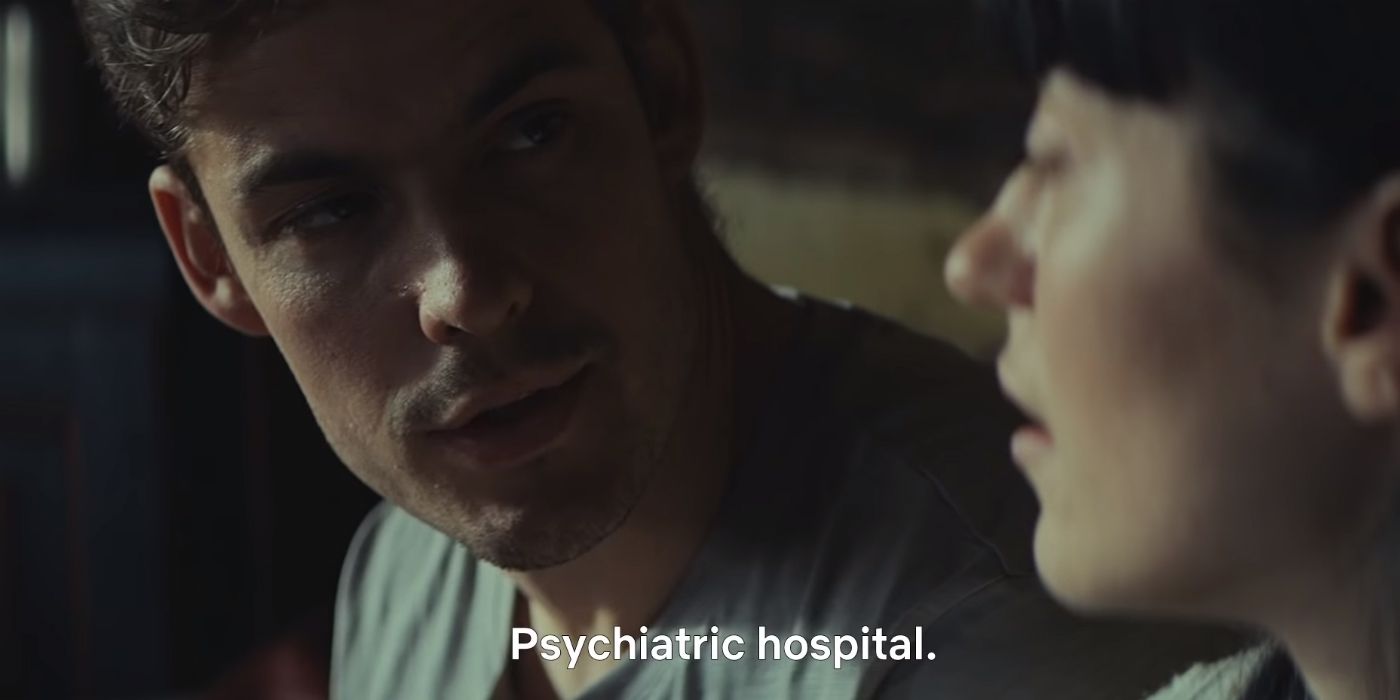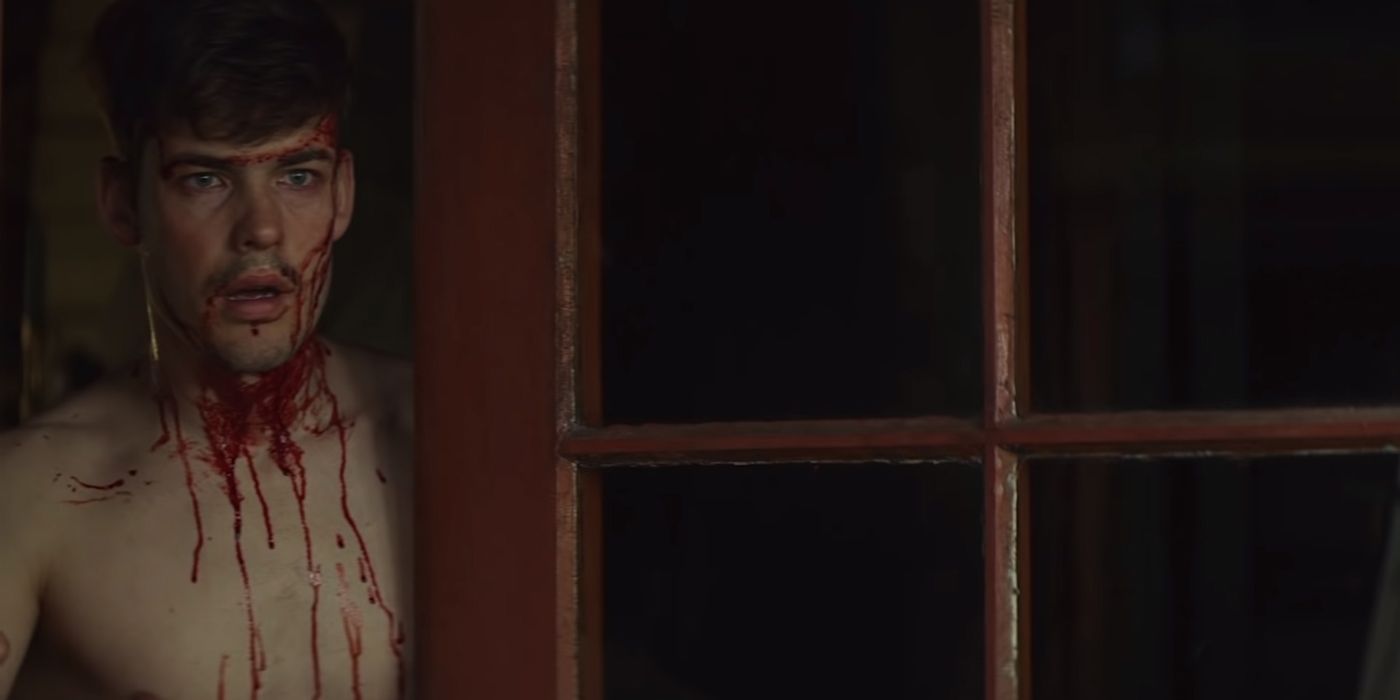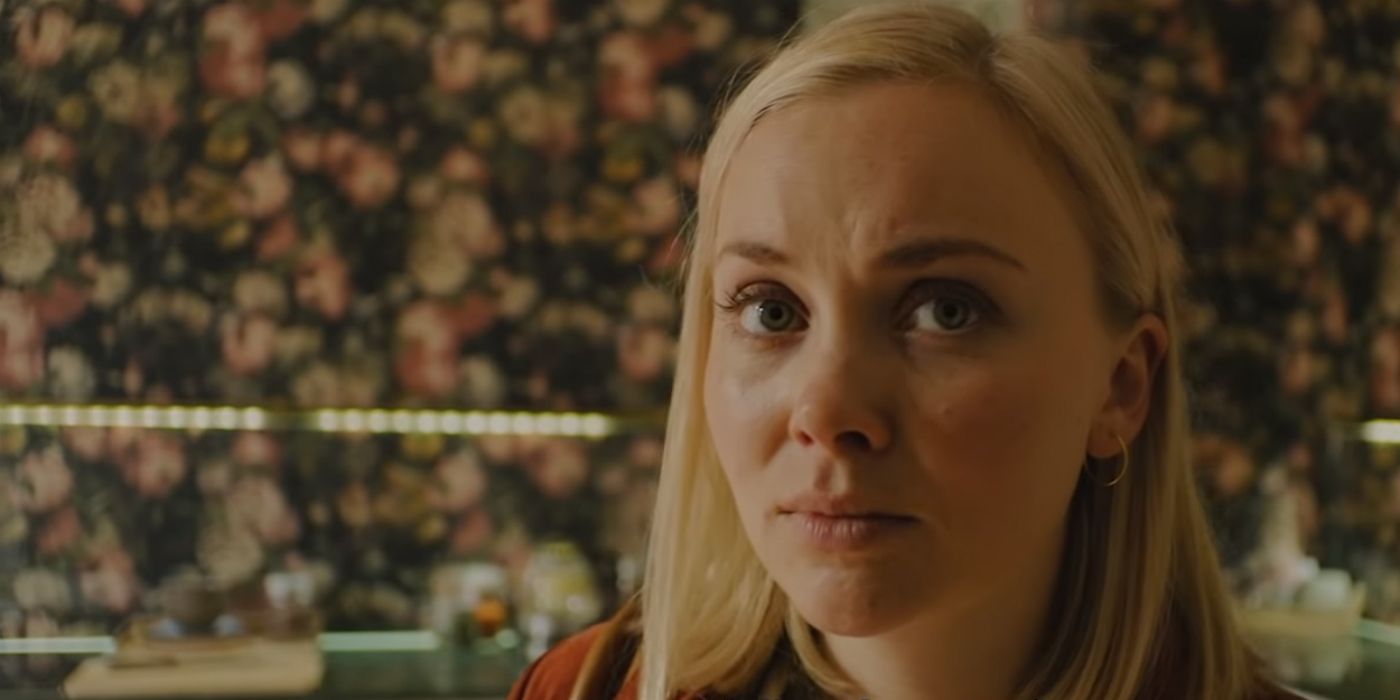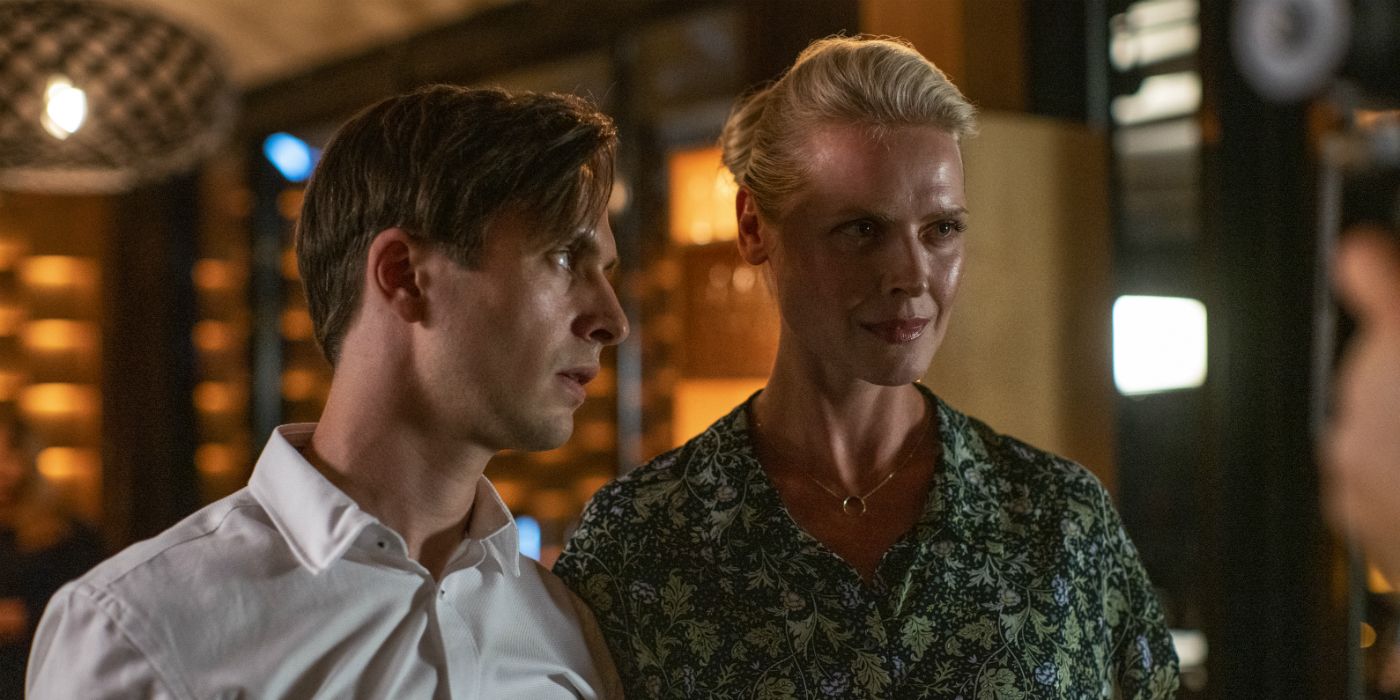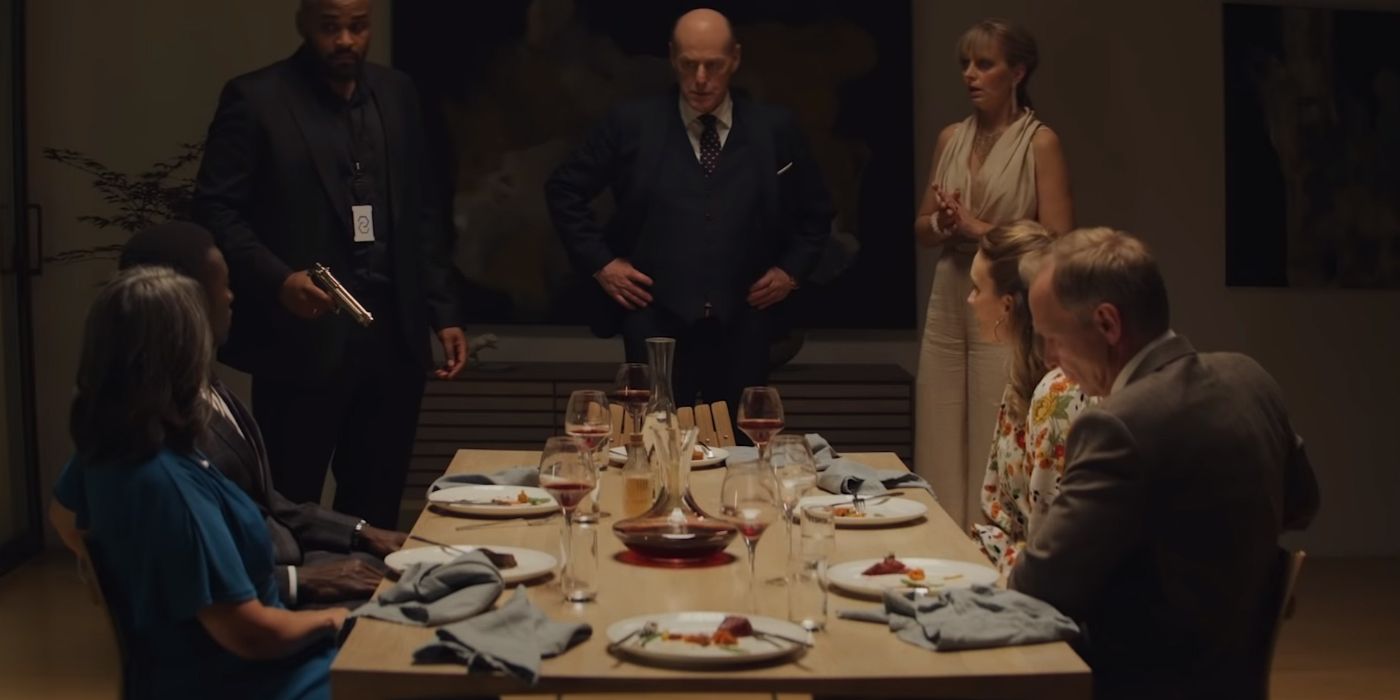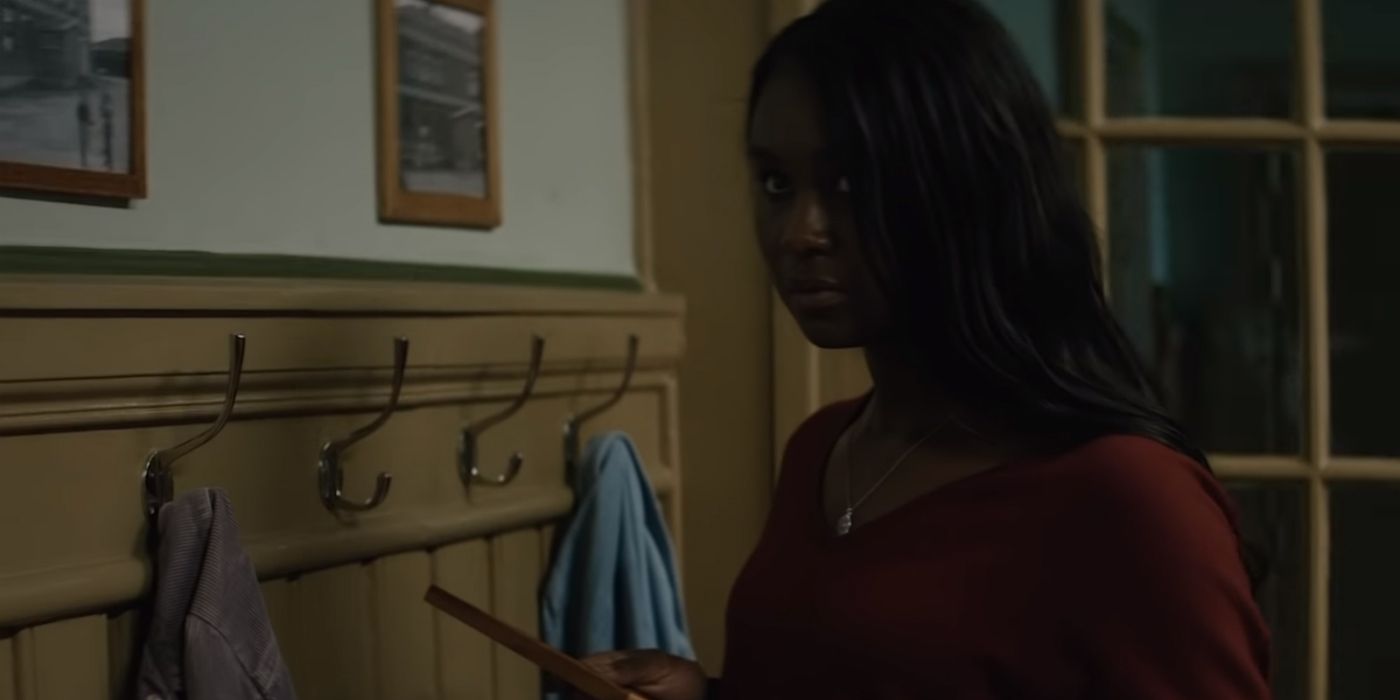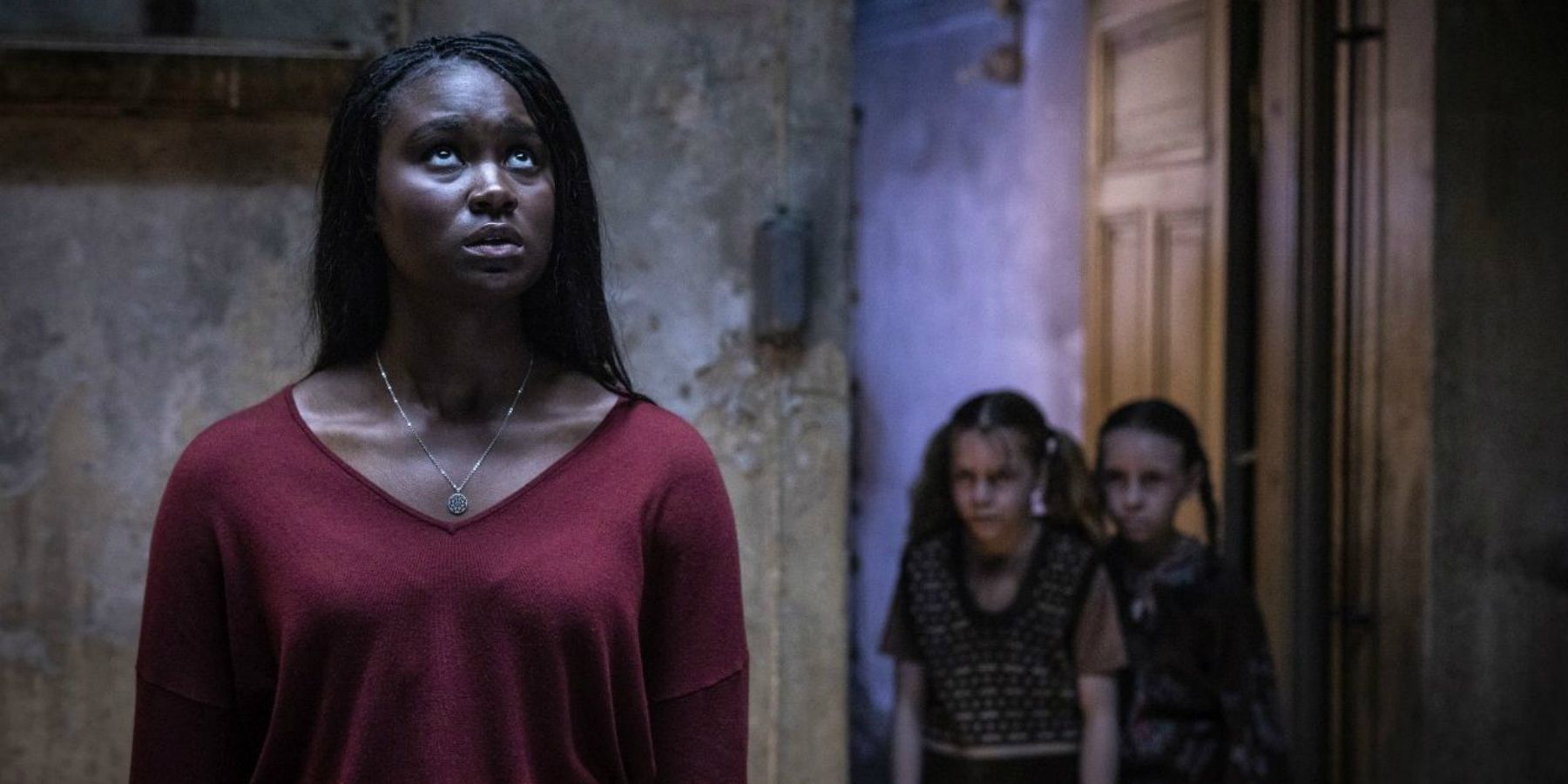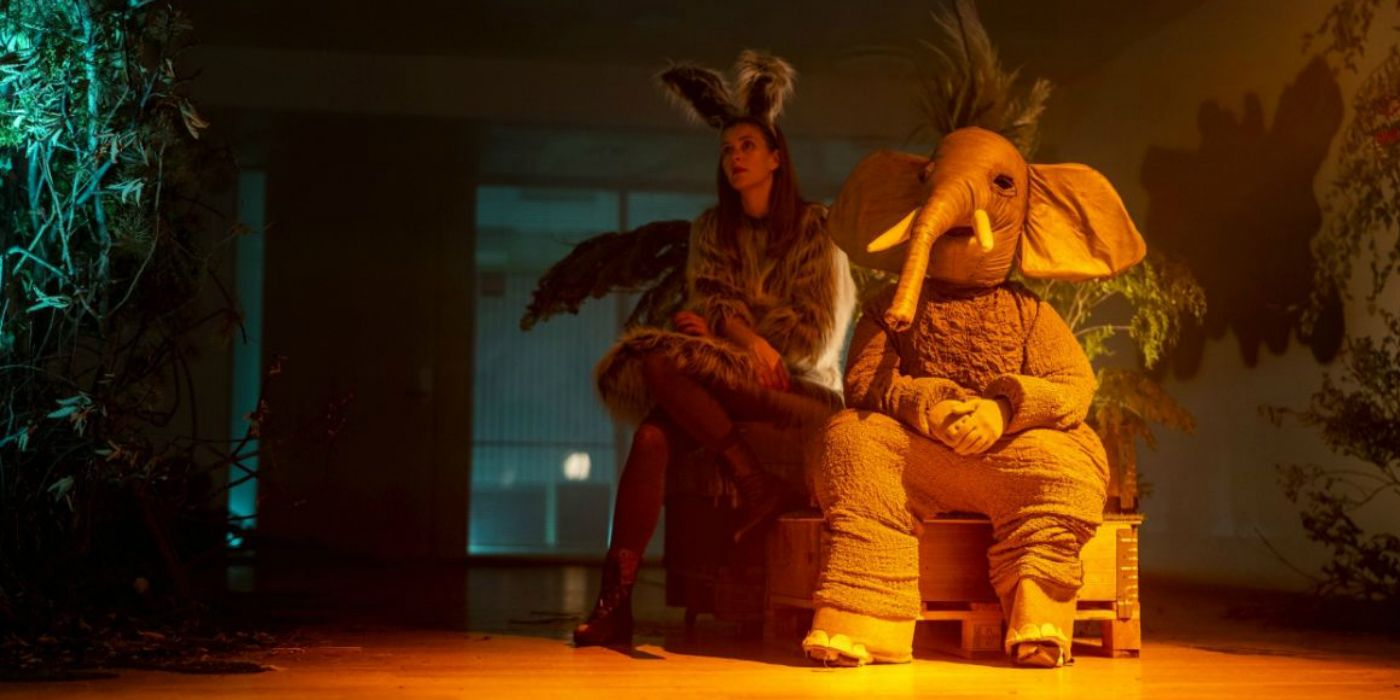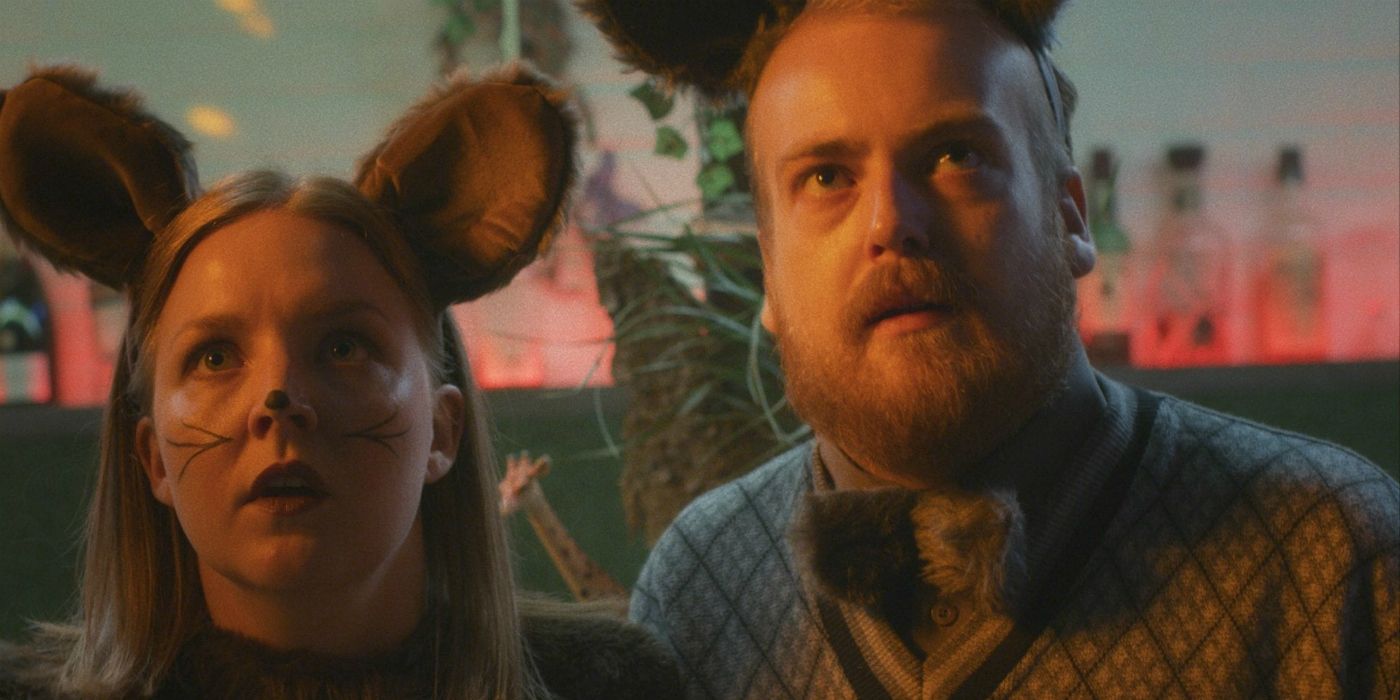Warning! Spoilers for Netflix's Bloodride
As a horror anthology, Netflix’s Bloodride presents audiences with six different endings to digest. Each episode leans into a different kind of horror to encapsulate a wide array of concepts, using its Norwegian setting to develop character plots.
Anthology style serialization has seen great success in the television sphere. It allows shows to explore a wide range of ideas with all the tools a genre has to offer while still staying on brand. Black Mirror proved the potency of anthology, relying on sci-fi to present standalone episodes that delve into humans’ relationship with technology, and each other. Netflix has tapped into the power of anthology on multiple occasions. The platform eventually took over Black Mirror in 2015 and has developed shows like Love, Death, And Robots; this has allowed individual episodes greater creative freedom to explore ideas under a unifying theme.
Bloodride, the newest offering in Netflix’s anthology selection, uses metaphor to connect the six episodes of its opening season. Its opening sequence is a symbolic exploration of these connections, with the characters all on a bus headed to places of violence, suffering, and, of course, blood. Each stop is a character or group of characters’ individual story that explains how they’ve ended up on this metaphoric blood ride, how their lives went from something mundane, like riding a bus, to a bloody horror show. Although this sequence is entirely symbolic, with none of the characters ever literally taking public transit, it serves as a guiding image that ties together each unique story and story ending.
Netflix’s Bloodride: “Ultimate Sacrifice” Ending Explained
Bloodride episode 1, “Ultimate Sacrifice,” follows a family forced to move from cityscape to countryside after a bout of financial trouble. Although father Leon (Bjørnar Teigen) and daughter Katja (Emma Spetalen Magnusson) quickly take to their new environment, mother Molly (Ine Marie Wilmann) is miserable and desperate to return to the city. The episode quickly takes a turn towards the supernatural when Molly discovers her neighbors sacrificing a cat in the woods and learns that the town is home to an ancient sacrificial Viking stone that provides financial rewards to those who use it. The neighbors’ ability to take time off on a workday and purchase Wagyu beef, as well as their obsession with keeping pets, comes from their use of the stone.
Molly is warned to not let greed get the best of her. But in her determination to accrue the money needed to return to her life in the city, she ignores this, ultimately leading to her downfall. Her attempts to sacrifice a rat and a dog she isn’t fond of don’t yield the results she wants because, as she learns, the reward is relative to the sacrifice. “I love you,” she tells her husband as she lunges at him with a knife, only to be stopped by her daughter who is forced to unwittingly sacrifice the mother she loves to the stone.
Netflix’s Bloodride: What Happened To Katja’s Parents?
“Ultimate Sacrifice” uses the frame narrative of a reporter going to interview the head of a multi-million-dollar company. The ending reveals that this company leader is actually Katja, whose first million came from the accidental sacrifice of her mother, confirming that the Viking stone really does work. However, the ending turns chilling as the reporter begins to reveal more information on how Katja’s father went missing. That, combined with the cat she holds in her lap Godfather-style, implies that Katja’s wealth did not come from a one-time event and that she eventually sacrificed her father as well. The presence of the pet also implies that, even after all that, Katja’s use of the sacrificial stone is anything but over.
Netflix’s Bloodride: “Three Sick Brothers” Ending Explained
Erik (Erlend Rødal Vikhagen) has spent the last three years in a psychiatric ward. Upon his release, his two brothers Georg (Harald Thompson Rosenstrøm) and Otto (Benjamin Helstad) show up at his door and insist on taking him to the family cabin to celebrate, inviting along hitchhiker Monika (Mette Spjelkavik Enkosen) to what is meant to be an epic party. Things quickly turn sour as the audience and Monika come to realize the truth espoused in the episode’s title: Erik is not the only sick brother.
However, when Erik’s mom arrives to the cabin, where Erik is sure Monika has been killed, audiences learn that the events witnessed were part of Erik’s hallucinations. Several moments leading up to this revelation foreshadow it, with scenes rewinding and replaying slightly differently as though a person was going through different possibilities in their head. Erik’s mom confirms that Erik has no brothers. Otto and Georg are figments of Erik’s imagination, and “Monika” is really a dummy from the gas station. The events that unfolded took place exclusively in Erik’s head.
Netflix’s Bloodride: Did Erik Actually Kill Anyone?
The episode implies first that Erik killed his father, which is what landed him in the psychiatric ward, then that his brothers did. However, Erik’s mother confirms that his father is still alive; believing this reality is merely Erik’s coping mechanism for dealing with his father’s abandonment. Although audiences are led to believe he kills Monika, that is also a trick of perspective and a major plot twist, as Monika never existed. However, at the end of the episode, after audiences learn that Otto and Georg aren’t real, the two characters show up at a gas station, egging Erik on to burn a woman alive. The final scenes play out with a large burning fire and the sound of a woman screaming, making this anonymous woman the third person Erik has supposedly killed.
This leaves audiences two options for understanding what literally happened. Like with Monika and his father, Erik’s killing this woman could merely be a part of his imagination running wild. On the other hand, understanding the full extent of Erik’s lack of touch with reality gives the audience the tools required to see through his hallucinations. Before learning this, audiences were dependent on Erik’s unreliable perspective to tell the story; after, everything the story shows is real, with audiences understanding that Erik’s worst impulses have finally taken a gruesome hold.
Netflix’s Bloodride: “Bad Writer” Ending Explained
The privileged and somewhat spoiled Olivia (Dagny Backer Johnsen) is living a perfect life until she goes to a creative writing class. She learns that when characters are doing too well, it is the author’s job to throw dirt in their face. Like a self-fulfilling prophecy, her life immediately gets ruined, with her roommates and boyfriend suddenly intent on murdering her. She discovers that she is actually a character in a fellow classmate’s story, subject to his whims. However, she also discovers that she too possesses the power to use writing to determine her own fate, combatting the man until they both finally come to an agreement.
However, it is only in that moment that she questions whether he was the real writer all along, a question that comes moments too late. Annelise (Synnøve Macody Lunde), the creative writing instructor, is the mastermind behind everything. The camera cuts to the real far less glamorous Annelise typing out the story. What Olivia said at the beginning of the episode was true: Annelise does not like her son’s girlfriend and uses her writing as a means of enacting a revenge fantasy. The story that unfolded all took place in her word processor.
Netflix’s Bloodride: Who Was The Real Writer?
When Annelise stabs Olivia, it seems like just another plot twist. But as Olivia bleeds out and Annelise tries to remove these lines from her story, she finds they won’t delete. The audience is left with three possible interpretations. One, Annelise has fallen too deep into her own machinations and truly believes herself to be all-powerful; everything up until that point had been her invention and everything after reality, but she doesn’t have the presence of mind to differentiate and accidentally killed Olivia in real life.
Two, Annelise was the writer all along, but the magic of her story-writing has come to an end as her revenge fantasy reaches its logical conclusion. There is nothing to imply that Annalise didn’t write this barbecue stabbing scene out herself. Her power, however, is finite and there is no undoing the story once it comes to its natural end. Three, there is another, unseen writer who truly controls all the strings. Despite Annelise believing herself to be in control of the story, she never was. She is just a character who the writer decided to throw dirt in the face of.
Netflix’s Bloodride: “Lab Rats” Ending Explained
When business tycoon Edmund (Stig R. Amdam) discovers his groundbreaking prototype has gone missing during a formal dinner, he quickly proves he is willing to do anything to get what he wants. He shows the people that most trust and care for him that they come second to his own desires. His downfall comes when, in pitting his dinner guests against each other, he ultimately bands them together against him. His wife Iselin (Anna Bache-Wiig), who is at one point the most loyal, discovers from her fellow prisoners that her husband doesn’t even know her birthday.
Edmund is so focused on outing the thief that he is unable to see the larger plan going on around him, which leads to his death. Despite his success in actually retrieving the prototype from Oda (Isabel Beth Toming), he ultimately fails. Those closest to him have decided to test his own loyalty by trapping him in the same cage he put them in. The combination for his escape is his wife’s birthday; his failure to unlock it leads to his death but also proves he actually holds no care for the people around him. His downfall is his certainty that he is the smartest person in the room, as he asserts at the start; while he is able to track down Oda, he becomes blind to the combined intelligence of those around him.
Netflix’s Bloodride: Oda’s Family History Explained
Iselin is convinced Oda stole the prototype. Edmund thinks she might want to take it to sell to a competitor for a high price. While both their instincts were right, their understanding of her reasoning was wrong. Iselin was not guided by feelings over a petty affair or dint towards greed, but by a deeper need for revenge.
While the dinner guests are in the cage, they discuss ways Edmund has been cutthroat in the past, alluding to “the massacre of ‘99” in which Edmund convinced his employees to buy shares in a company he knew was failing before jumping ship himself. This led several of these people who trusted Edmund to financial ruin, several of which ended up committing suicide. Oda is the daughter of one of the latter, seeking to ruin Edmund for what he did to her family. She was able to slip past Edmund’s security vetting by taking on the surname of the family that adopted her after her parent (or parents) passed away.
Netflix’s Bloodride: “The Old School” Ending Explained
Soon after starting work at a school that has reopened for the first time in 40 years, schoolteacher Sanna (Ellen Bendu) experiences supernatural callings. She uncovers the mystery of four sisters who went missing in the late 1970s after the town turned on them and their family. Despite being warned multiple times that these girls are the “devil’s spawn”, she proceeds with her plan to resurrect the girls after discovering an instruction sheet left behind by them. Her ceremony succeeds and the girls return. However, the children were murdered on behest of the entire town for a reason, Sanna discovers too late. She realizes their being called devil’s spawn was literal as their eyes turn black and teeth grow to fangs.
Netflix’s Bloodride Instills Its Tales With Gruesome Folk Horror Elements
“The Old School” exists in the brutal world of folk horror, a fairytale setting where good people who don’t heed warnings suffer the consequences of their actions. Sanna wanting to help the sisters comes from a good place, but she rejects advice time and time again. She is described by another schoolteacher as having that “new teacher mint” but refuses to acknowledge that this more experienced professional’s assessment might be accurate. When a townsperson calls the sisters “devil’s spawn”, she does not think to question why an entire town would reject four young children. Sanna’s lack of expertise, but utter certainty in herself, ends up costing her her life.
Netflix’s Bloodride: “The Elephant In The Room” Ending Explained
“The Elephant In The Room” in Bloodride’s final episode is both literal and figurative. William’s (Nader Khademi) elephant costume is stolen by Martha (Marianne Jonger) who uses it as a disguise to get away with her evil plot. However, the figurative elephant in the room is defining exactly what the relationship between William, Martha, and Helene (Silje Storstein) is. Newbies Kristen (Rebekka Jynge) and Paul (Karl Vidar Lende) try to uncover the mystery, but it is the office veterans’ unwillingness to speak openly about the “elephant in the room” that leads to tragedy. Martha, who was not bullied but was a bully herself, is able to murder William, steal his suit, and use that disguise to then attack Helene. The assumptions Kristen and Paul are forced to make in the absence of information lead them to lock poor Helene in the room with Martha, sealing her fate.
Netflix’s Bloodride Explores The Depths Of Human Cruelty
There are few likeable people in Bloodride, “The Elephant In The Room”. Most people in the office, save Kristen and Paul, are HR lawsuits waiting to happen, either blatantly engaging in sexual harassment or inappropriate gossip. There is a mixed morality to the retribution that comes to William and Helene because, despite their not deserving death, they are also not particularly nice people. Throughout Bloodride, there is a running theme of human cruelty, of a twisted justice coming to those who may or may not deserve it. Knowledge is power, either something that when abused results in suffering or when ignored results in suffering. According to many of Bloodride’s episodes, this dichotomy is simply a part of human nature.

